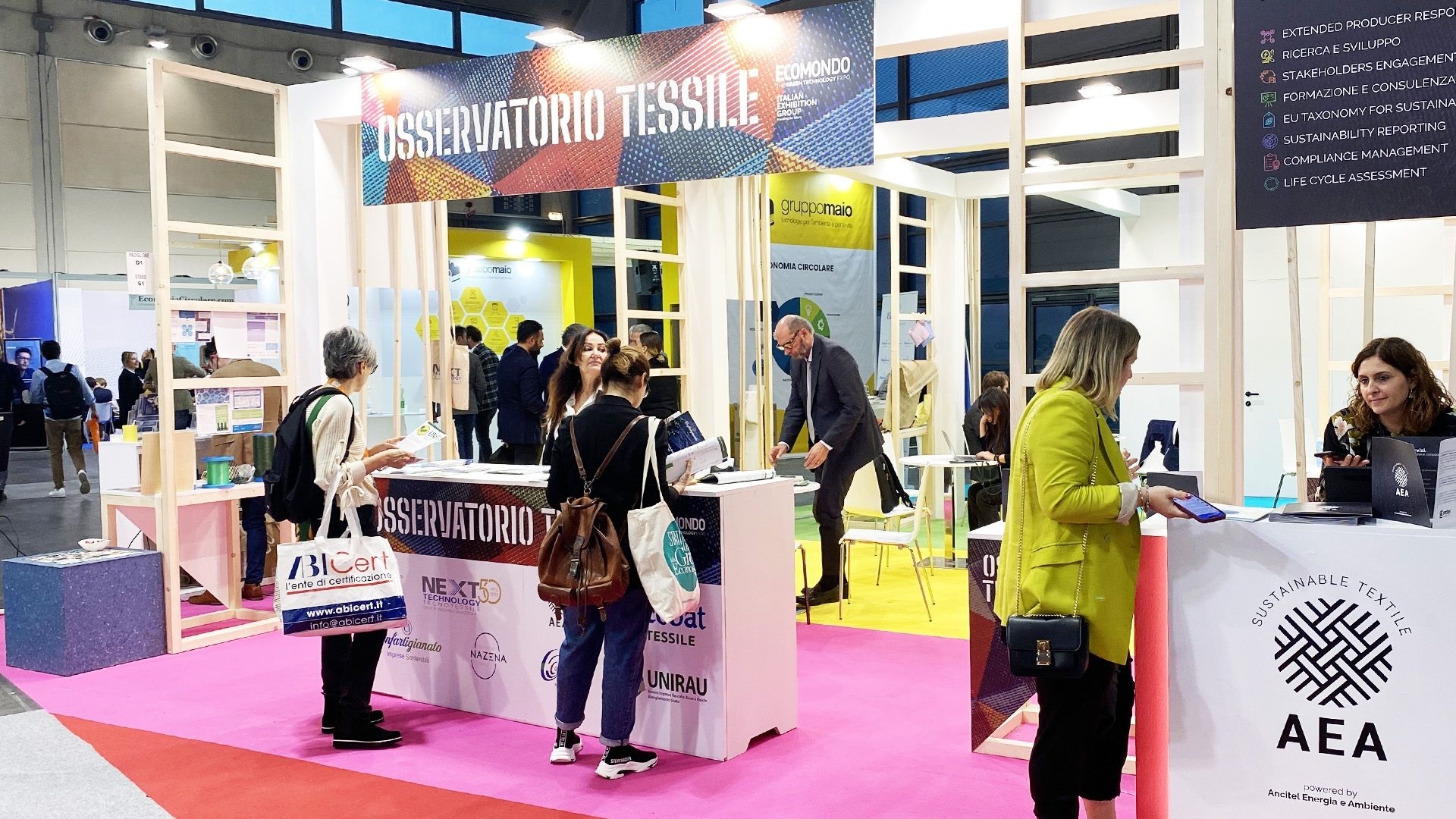Textile District
The textile sector has an important place within the Ecomondo layout thanks to the Textile Observatory which, now in its third edition, focuses on textile waste management by Italian municipalities and more.
This area of exchange and innovation features the sector’s main stakeholders, including waste producers and managers, consortia and associations, research and development institutes, textile treatment and valorisation plants and the second-hand sector.

THE IMPORTANCE OF THE TEXTILE INDUSTRY IN ITALY AND ABROAD
Besides being one of the pillars of the European economy, the fashion industry is among the sectors with the greatest environmental impact. It consists of 400,000 businesses generating revenues of EUR 55 billion, equivalent to 31% of the total in Europe.
But it is also among the most polluting sectors on the planet, it is responsible for 10% of global carbon emissions, consumes around 93 billion metric cubic metres of water in production alone, and dumps around 500,000 tonnes of microfibres into the seas. Not to mention that the production of textile products almost doubled between 2020 and 2015, and clothing consumption is also forecast to grow by a further 63% by 2030*.
*Fonte European Commission
In addition to its high water consumption and carbon footprint, the textile industry uses polluting chemicals that hamper the recycling of raw materials, with the result that natural fibres are becoming increasingly rare and expensive, driving major brands to search for recyclable fibres and cleaner production processes.
All these considerations, combined with the fact that clothing production generates a massive amount of textile waste along supply chains but also at industrial and consumer level, the aim at Ecomondo is to take stock of circularity, sustainably-produced fibres, recycling technologies and safer chemical protocols, taking up the targets that the European Union has set itself.
"By 2030 textile products placed on the EU market are long-lived and recyclable, to a great extent made of recycled fibres, free of hazardous substances and produced in respect of social rights and the environment". This is the promise of the EU Strategy for Sustainable and Circular Textiles, a strategy that is part of the Sustainable Product Initiative (SPI) package of proposals published by the European Commission.
In this scenario, the key terms for fashion’s green conversion are clothing recyclability (today only 1% of textile waste is reused, and 85% of production ends up in landfills), eco-design (and shared standards to set its parameters), transparency and control of the supply chain. The education of all stakeholders is also an important driver in this process, in order to involve not only production and distribution but also consumers who, with their purchasing choices, play an extremely important role in guiding the industry.
CONTACT US
Silvia Gabellini




